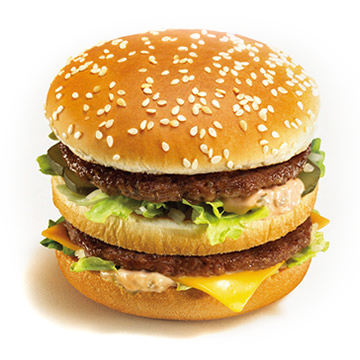[alert type=”general”] This guest post by Laura Brandenburg is the second in a series of contributions by business analysis professionals I respect, and whose work I follow. Laura Brandenburg has a passion for helping people begin or advance their careers in business analysis which is reflected in her submission. Also, have a look at the initial guest post from Adriana Beal on earning recognition for your business analysis work. Enjoy! – JB[/alert]
Are you disappointed that you haven’t achieved one or more goals from last year? Do you feel like you are doing the right things but are still not getting where you want to go? Are you beginning to question whether or not you set the right goals for yourself this year?
What tends to happen in performance planning is that we set relevant and meaningful goals but when we get down to the task level – the how of accomplishing our goals – it’s not so clear about what exactly we should be doing to reach out goals. Often there are many possibilities and we need to learn how to select the best ones so we achieve our goals as quickly as possible.
In this article, we’re going to look at three categories of career activities and how they help and hinder you from achieving your career goals.
The three categories are as follows:
- The easy activities that generate traction.
- The easy activities that do not generate much traction.
- The hard activities that must be done to reach out goal once you get traction.
When we set a new goal and start moving forward, life is exciting. For almost any endeavor, there are many quick wins we can accomplish and we feel good about our progress. We are wise to choose the easy, high value tasks first because they create positive momentum that make the more difficult work seem possible.
Let me share a personal example. I set a goal for myself to send out 25 thank you cards this year. Last week I completed the first step of ordering the thank you cards – that was easy and I felt good about it. I also wrote one thank you card to the owners of a local restaurant that I really appreciate because they create interesting and healthy food options and are deep supporters of the local community. That was fairly easy.
At this point I have some traction behind this goal and I have a decision to make about my next step. Do I continue to do the easy tasks or do I take on some hard tasks? Here are some ideas I have for continuing to move forward toward this goal:
- Create a list of people and organizations to send thank you cards to.
- Ask my spouse to pay attention to people who are nice to us and remind me to send a thank you card to them.
- Go to the post office and mail the thank you card I’ve written.
- Fold all of the thank you cards so they are ready to go.
- Write our return address on the thank you card envelopes.
- Write a second thank you card.
Tasks 1-3 seem more difficult to me, but they move me forward towards this goal. Tasks 4 and 5 seem easy to me, but they aren’t going to move me forward that much. They are the easy activities that do not generate much traction. Tasks 3 and 6 are the only tasks that actually takes me a concrete step closer to achieving my goal of sending 50 thank you cards. (I chose the word “send” carefully. I’m often one who let’s unsent mail sit on the desk for weeks!)
Let’s look at an example that might be closer to home – how to approach your business analyst job search process.
Let’s assume you’ve already updated your resume and your LinkedIn profile because you found those easy to do. You’ve also applied to a handful of jobs on the Internet and sent emails to a small number of people you’ve worked with previously to let them know you are on the job market. These are all perfectly reasonable first steps to get you moving and you should feel great about your progress.
Now here’s the task list sitting in front of you:
- Update your resume again based on feedback from a recruiter (even though you might not totally agree with their input).
- Apply to 5 more jobs online.
- Establish a job application tracking system so you know what resume and cover letter you sent to each job opportunity and can maintain a history of contacts.
- Research and follow-up on the jobs you already applied to.
- Set-up appointments to meet with contacts in your professional network.
- Go to a networking meeting and talk to 3 new people, get their cards, and follow-up with them.
On this list, what seems difficult and easy to you? What do you honestly feel will move you forward towards your goal of becoming a business analyst? If you are like most business analysts I talk to, you’ll find 1 and 2 the easiest (but that they don’t get you much traction), while 3 is a necessity, but 4-6, while possibly more difficult, are what really help you achieve your goal. Yet I’ve seen many BAs wait months if not an entire year or more before getting started on the last items on the list, particularly 5 and 6.
And in case you don’t happen to be looking for a job right now, let’s look at an example within a BA project. Say you’ve set a performance goal to become an expert in three new business analyst techniques, such as a process flow diagram, use case model, and data flow diagram. You’ve bought a book or taken a course on one of these topics and learned a great deal. You’ve made forward progress and you should feel good about yourself.
Now here’s what’s sitting on your potential task list:
- Learn about the next new business analyst technique on your list of goals.
- Experiment with the technique you already learned about privately, perhaps by creating a draft model.
- Share your model in a review meeting or requirements specification and ask for feedback.
- Host a lunch-and-learn to share what you learned about the technique.
On this list, what seems difficult and easy to you? What do you honestly feel will move you forward towards your goal of becoming an expert in three new business analyst techniques? While task 1 might seem like the easiest, tasks 2 and 3 are the most critical. In general, it feels easier to keep learning new information and difficult to apply what we’ve learned and receive feedback. But the more difficult tasks – applying the technique and sharing it for review – turn your knowledge into experience which can eventually lead to expertise so you can confidently complete task 4, which demonstrates you are an expert.
As you are looking at your professional development goals for this year, pay attention to the tasks you put on your to do list and consider what category of tasks you are choosing. By taking a conscious look at whether each task is easy or difficult and what results you expect it to achieve, you’ll start to make better decisions about how you invest your limited time and energy.
When working on a new goal, it’s a good idea to start off with something easy and doable that moves you forward – by all means get the quick win and get some momentum. But if you truly want to grow and progress towards a bigger goal, there will be some necessary and important work that doesn’t seem quite so easy. Take care not to avoid it or you’ll eventually lose the initial traction you have and not achieve your ultimate goal.
When in doubt, commit to investing 30 minutes each week in something that seems difficult and simply watch what happens. You might amaze yourself!
I want to give a big shout out to Jonathan for allowing me to post this article. I wish him and you all the best success as a business analyst and achieving your BA career goals this year.
(If one of your career goals happens to be getting started in a business analyst career, you might want to check out my book How to Start a Business Analyst Career as it will help you get traction under your career goal. That’s Jonathan’s affiliate link and your investment also helps him run this great website.)






Simply brilliant!
I completely agree with Laura. In my experience, difficult goals become simple when someone breaks these goals to number of tasks and group them in to simple, medium and complex. The next thing is to work on smaller and medium pieces which gives a win-win situation. This experience gives confidence and encouragement in handing bigger/difficult/complex tasks.